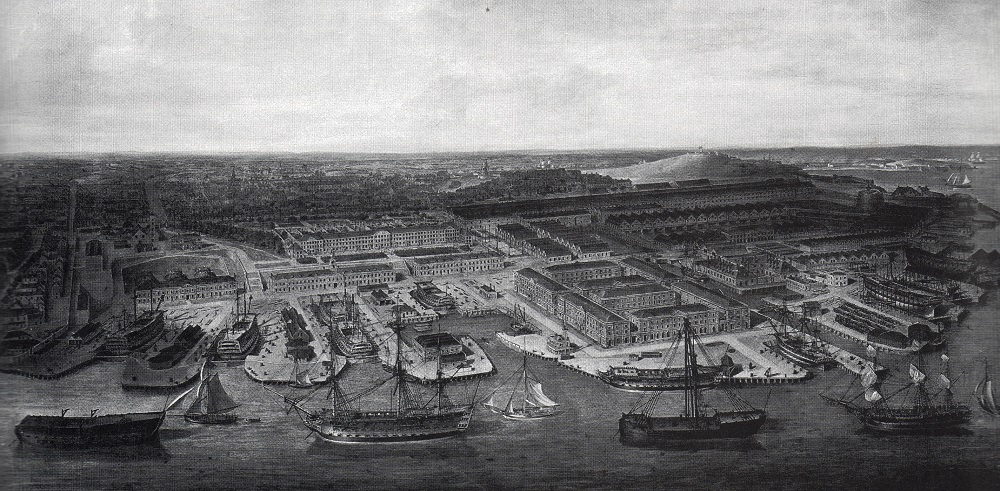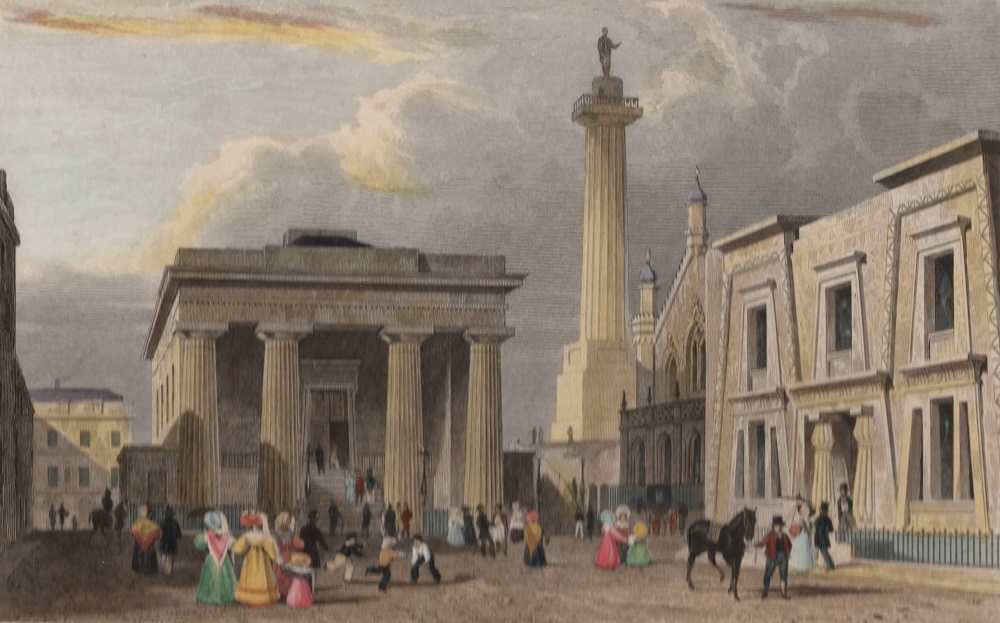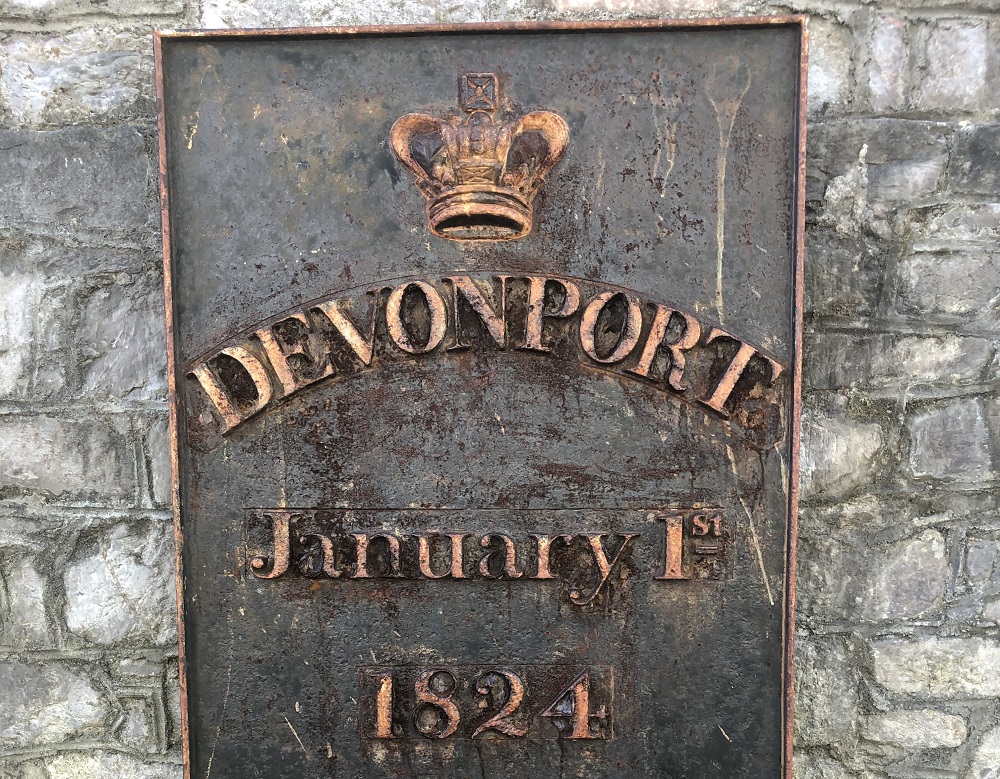By Mark Barton, RINA Historian
For towns it is rare we know the exact day they came into being but that is the case for Devonport, the Royal Navy’s main home in the South West. By Royal Decree the town came into being on the 1st January 1824.
This marked a step in the development of the dockyard and the town that grew up to support it. Originally the main port in Plymouth was around Cattewater on the east side of the city which was sheltered but had easy access out into Plymouth Sound. While Drake is thought to have unloaded his vessels in 1580 to Trematon Castle from Antony Passage that was not where vessels normally unloaded and was probably chosen as it was then a discrete side river, where even the masts would be hidden from the sea and from any shipping out in the Sound.
Following the Restoration in 1690 the Royal Navy started a shipbuilding programme, ordering 27 new ships. This was matched with a programme to improve the dockyards. Significant work took place at Portsmouth with ten acres reclaimed from the sea and two non-tidal basins established, including the Great Ship Basin, that became known later as No. 1 Basin. This also involved major technical improvements as it was this update that moved graving docks from wooden sided to Edmund Dummer’s stone dock design with stone slides to enable materials to be delivered to the dock bottom easily,[1] speeding up refits.[2]
While the London dockyards remained busy and with the need to counter France and improve access to the Atlantic it was decided that a new Royal Dockyard should be created in the southwest. This was to be based in the vicinity of the already existing Royal Citadel at Plymouth. The initial expectation was for it to be at Cattewater,[3] the merchant harbour. However, Edmund Dummer who conducted the surveys decided it was unsuitable and submitted plans for an alternative location on the Hamoaze.

The place that would become Devonport, Plymouth Dock, as it appeared in 1790
The new docks would be built on what would now be described as a greenfield site out of the main city but near it, exactly as the Tudor dock in Portsmouth had originally been. The place was given the original name of Plymouth Dock. The contract for the building of the yard was let in 1690 and it opened in 1695. It had the same style stone docks as Portsmouth[4] along with a centralised storage area and other industrial improvements. The original basin and dock now all redeveloped were at the southern end of what is now referred to as South Yard with Dummer’s dock and basin being where 1 Basin and 1 Dock now are.
Unsurprisingly, a town sprung up around the yard to provide accommodation for the workers and this grew in size and wealth; such that it wanted to become its own independent town. In 1823 the people living outside the dockyard successfully petitioned King George IV to have the name changed to Devonport and they received their reply from the Home Secretary Sir Robert Peel on the 24 December confirming that their wish was granted.[5]
Therefore, in accordance with his response, a week later, on the 1st January, the town was renamed. The Town Hall, Devonport Park and Devonport High School followed. It is for this reason the main road through the west end of Plymouth is called Union Street, it unites Plymouth, Stonehouse and Devonport which were all separate places. However, the Royal Navy did not quite keep up with the name changes and continued to use Plymouth Dock as the name of the Yard until 1844 when it started referring to the yard by the same name as the adjacent town.[6]

Architect John Foulston deployed an eclectic mixture of styles for Devonport’s centre, including a Greek Doric town hall and commemorative column
Footnotes
[1] E Sargent, The Development of Dock Construction at the Royal Dockyards in the Nineteenth Century Transactions of Naval Dockyard Society Vol 4 October 2008 pp91-114 p91.
[2] He also designed a new sluice system which meant the docks could be pumped out quicker, while the stepped design of the docks meant they held less water that need to be pumped out.
[3] J D Davies, “Chatham to Erith via Dover. Charles II’s Secret Foreign Policy and the project for New Royal Dockyards 1667-1672” Transactions of Naval Dockyards Society, Vol 8, June 2012. p128.
[4] These were built slightly earlier than those at Portsmouth.
[5] R A J Walling The Story of Plymouth (Westaway, 1950) p195.
[6] The December 1843 Navy List still has all the officers appointed to Plymouth Dock the December 1844 Navy List uses Devonport.




